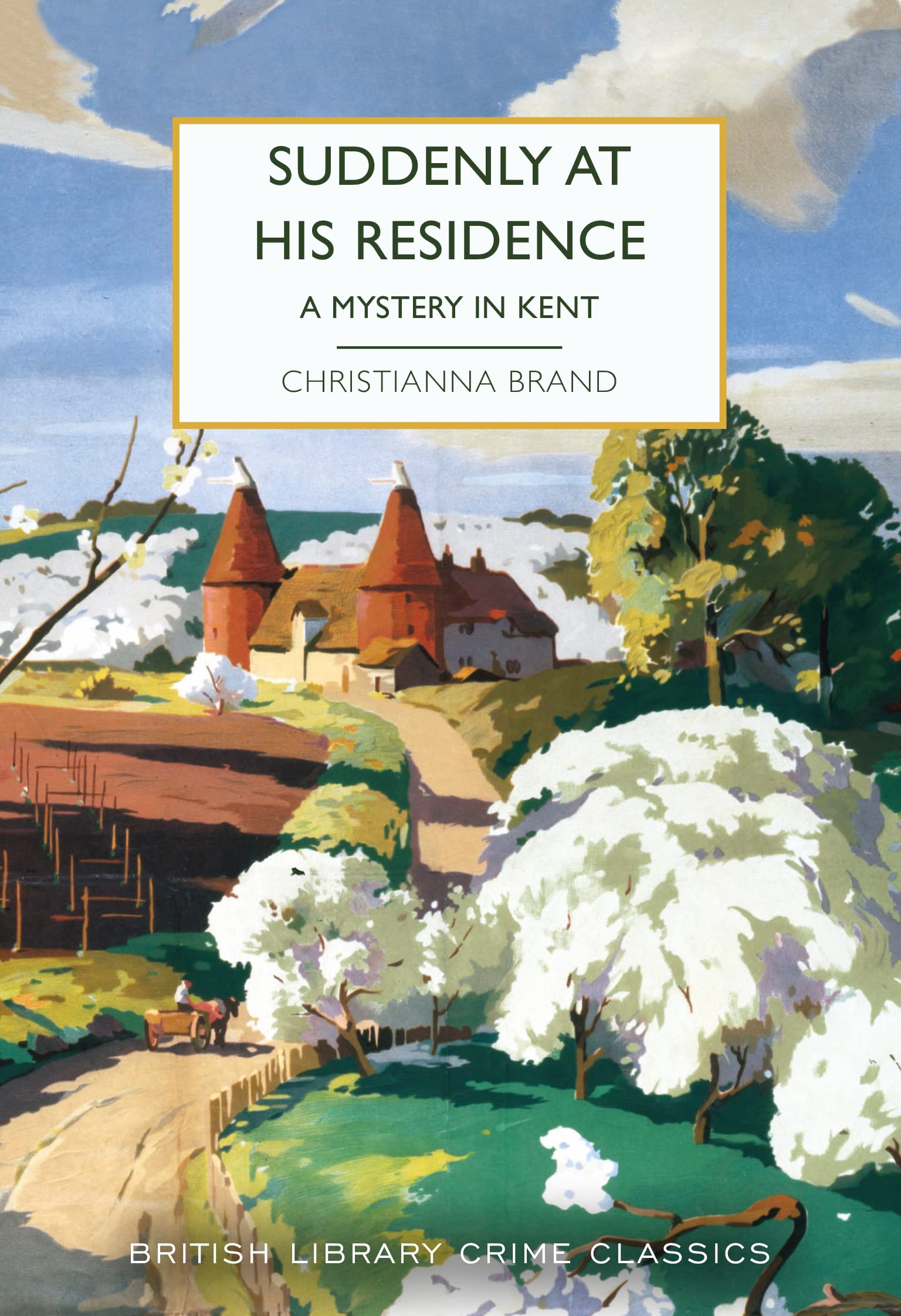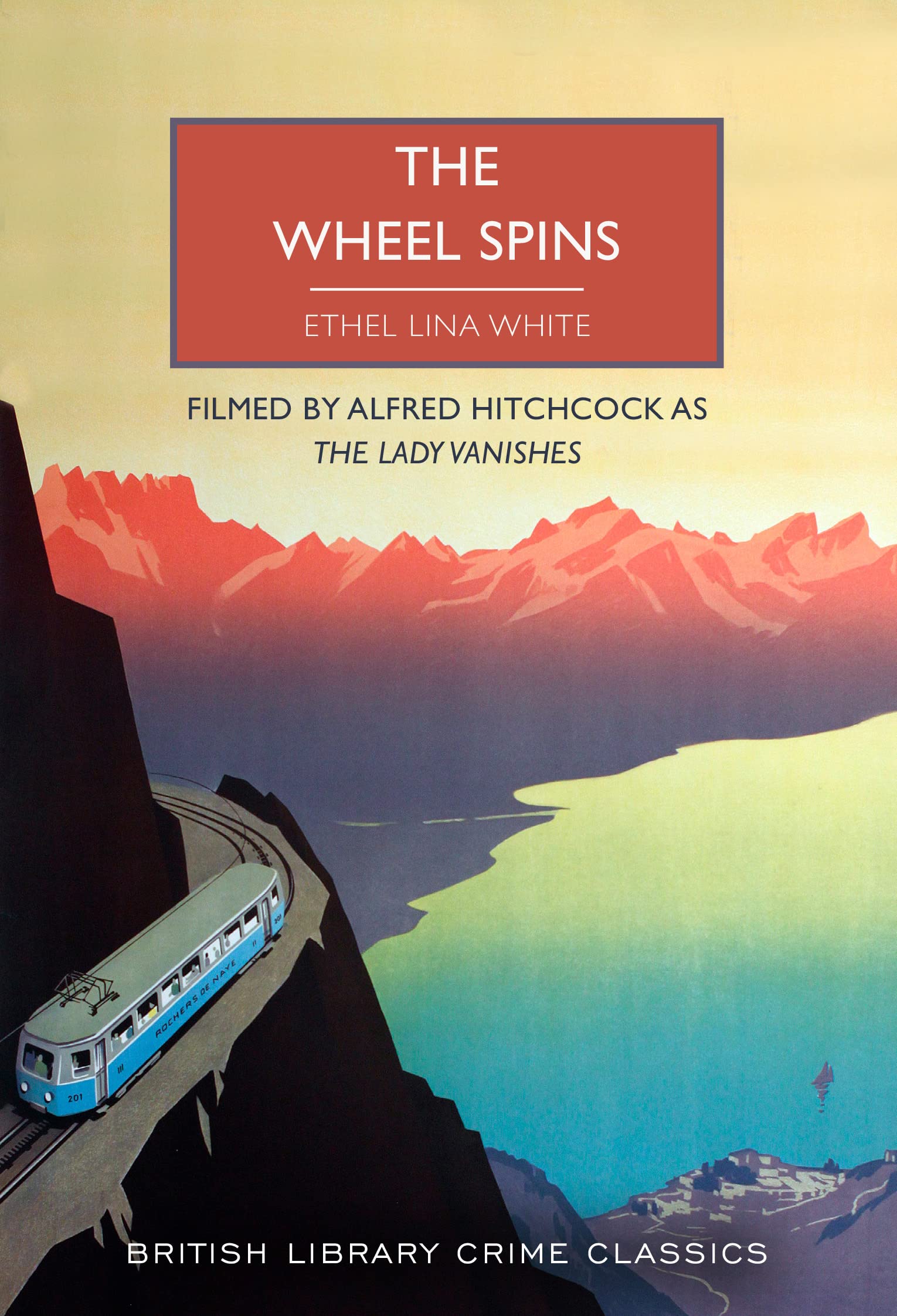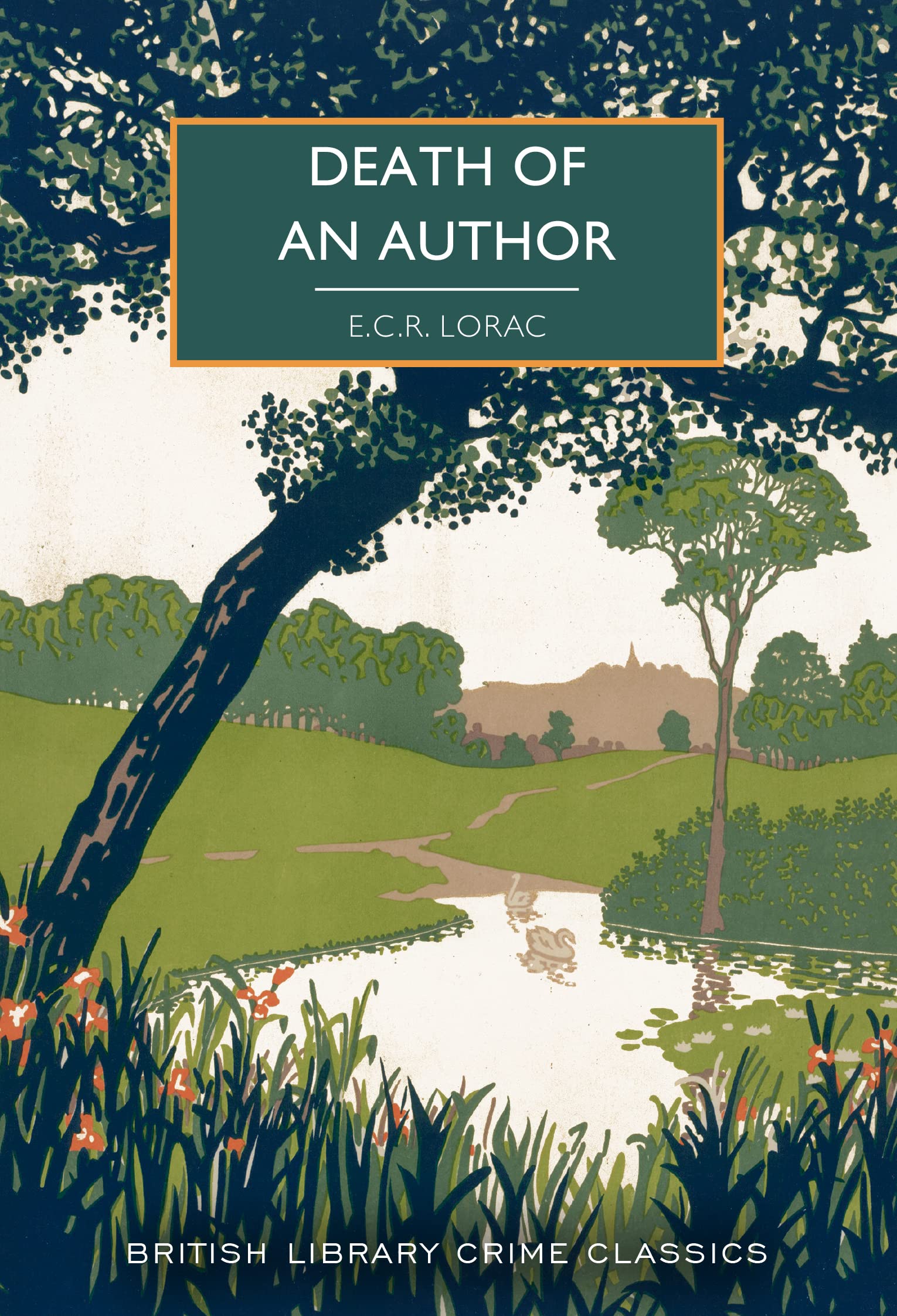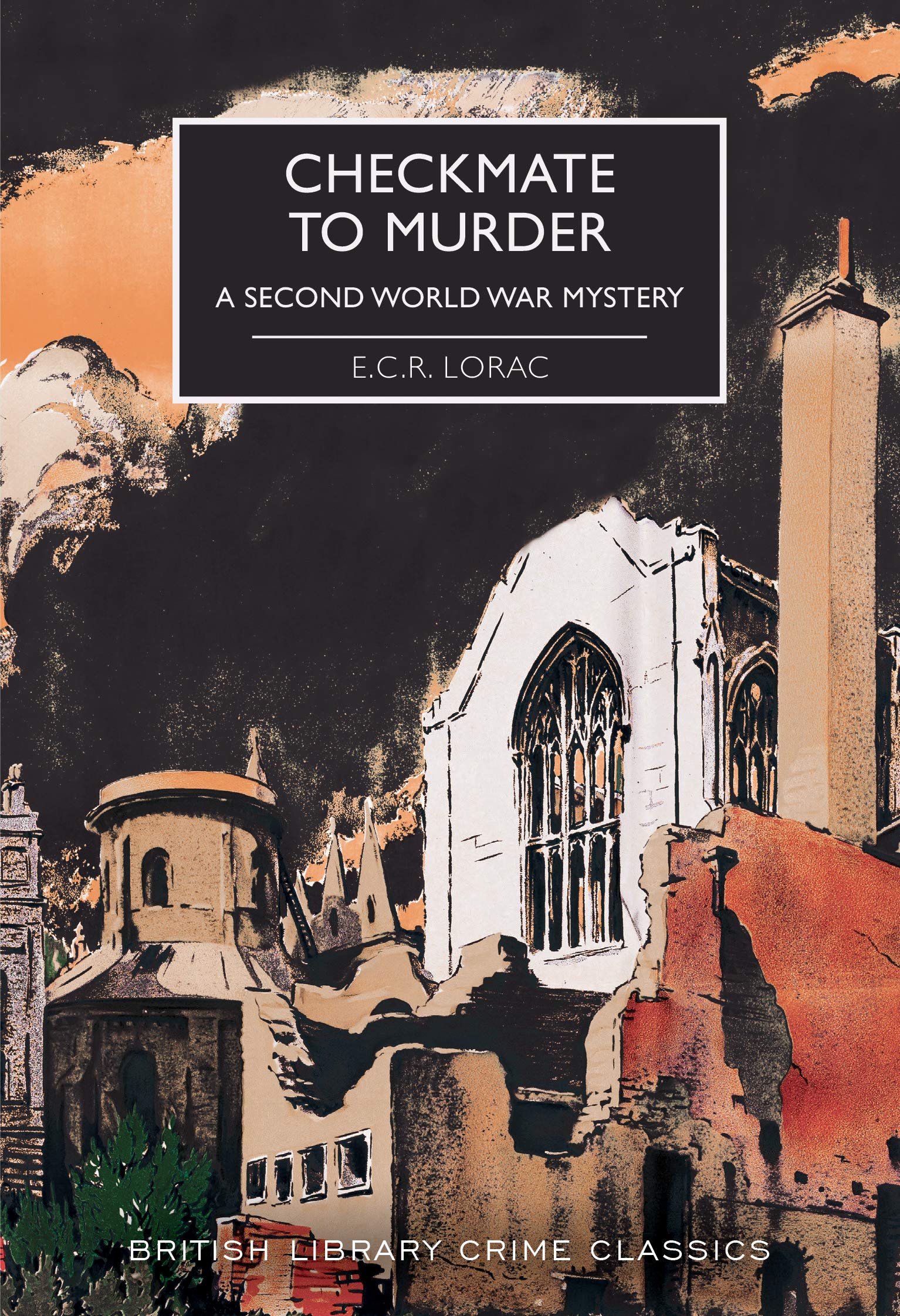Astoundingly, Who Killed Father Christmas? (2023) is the fifth collection of seasonal mysteries collated by Martin Edwards for the British Library Crime Classics range. And, with the BL kind enough to provide me with a review copy, it seemed like the perfect excuse to start some Christmas reading a little earlier than planned.
Continue readingBritish Library Crime Classics
#1127: Suddenly at His Residence, a.k.a. The Crooked Wreath (1946) by Christianna Brand

![]()
![]()
![]()
![]()
![]()
Good heavens, after this second reading of Christianna Brand’s Suddenly at His Residence, a.k.a. The Crooked Wreath (1946) do I have plenty of Thoughts. Indeed, I have so many Thoughts that I’m deliberately writing about it on a Thursday so that my self-imposed 1,000 word limit stops me going on for about four times that length, to the enjoyment of no-one. So: Sir Richard March, tiring of the attitudes of his grandchildren, threatens to rewrite his will, retires to the lodge in the grounds of Swanswater Manor for this express purpose…and is discovered dead the following morning. Having been visited by various people throughout the previous evening, who actually poisoned him?
#1115: The Wheel Spins, a.k.a. The Lady Vanishes (1936) by Ethel Lina White

![]()
![]()
![]()
![]()
![]()
Young Iris Carr is travelling back to England alone when she is befriended by governess Winifred Froy; taking tea in the dining car of their train, they return to their carriage, where Iris falls asleep. Upon awakening, she finds Miss Froy has disappeared and, more confusingly, that all the forriners sharing the compartment insist there never was such a lady to begin with. Might the attack of sunstroke Iris suffered on the platform before boarding be to blame, or might there be a more sinister explanation? Thus The Wheel Spins (1936) walks in the same furrow as a good many suspense stories, not least Phantom Lady (1942) by Cornell Woolrich and the Jodie Foster-starring Flightplan (2005).
#1103: Death of an Author (1935) by E.C.R. Lorac

![]()
![]()
![]()
![]()
![]()
I’ll let you in on a secret: much as I struggle to read two books by the same author close together, there are certain writers whose diversity of approach enables me to sidestep this consideration. One such personage is Erle Stanley Gardner, and I’m starting to suspect that E.C.R. Lorac might be another. Lorac’s country-set novels featuring Inspector Robert Macdonald are very different beasts to his London-based cases, and Death of an Author (1935) — not featuring Macdonald at all — is different again: a zesty, propulsive, and supremely clever little puzzler dug out from seemingly inescapable obscurity by the British Library for our not inconsiderable enjoyment.
#1089: “Murder! What in God’s name do you mean?” – Crimes of Cymru [ss] (2023) ed. Martin Edwards
Another themed collection of crime and mystery stories from the British Library, Crimes of Cymru (2023) sees Martin Edwards’ exemplary genre knowledge tasked with selecting tales with Welsh settings or origin.
Continue reading#1080: Our Splendours Are Menagerie – My Ten Favourite ‘New to Me’ British Library Crime Classics
I looked at my ten favourite fictional sleuths a little while ago, and so, in honour of today’s Bodies from the Library conference at the British Library, here are my ten favourite novels that the excellent British Library Crime Classics range introduced me to.
Continue reading#1076: Checkmate to Murder (1944) by E.C.R. Lorac

![]()
![]()
![]()
![]()
![]()
In the latter stages of World War 2, artist Bruce Manaton is painting the portrait of a friend dressed in the robes of a cardinal, and his sister Rosanne fretting about the efficacy of the blackout curtains on the studio where they live, when there is a knock at the door. It seems that a special constable has discovered the body of murdered Old Mr. Folliner, the Manatons’ miserly landlord, and apprehended the killer as he was fleeing. Leaving the suspect in the care of the five people in the studio — two chess-playing friends have also dropped by for the evening — the constable summons the police, and before long Chief Inspector Robert Macdonald finds himself with another complex tangle to unfurl.
#1070: Twice Round the Clock (1935) by Billie Houston

![]()
![]()
![]()
![]()
![]()
The core framing of Billie Houston’s sole crime novel Twice Round the Clock (1935) — a murdered man discovered in the opening scene, before we jump back in time twelve hours and see events that lead up to the murder, then the twelve hours that follow the discovery — is hardly new, but the book is written with a fresh eye, and such clear lines in its character and narrative that it’s difficult not to enjoy. Don’t come for the detection or clues, which are scanty, but those of you who enjoyed Death of Anton (1936) by Alan Melville, another British Library Crime Classic, will find this equally to your liking for its clear setting, distinct characters, and occasionally unusual ideas.
#1052: The Mysterious Mr. Badman (1934) by W.F. Harvey

![]()
![]()
![]()
![]()
![]()
The expertly-curated British Library Crime Classics series continues to diversify with crowd-pleasing reissues of Anthony Berkeley, Christianna Brand, and John Dickson Carr, never-heard-of-em delights like Family Matters (1933) by Anthony Rolls and Death of Anton (1936) by Alan Melville, and stirring in a Freeman Wills Crofts or a few E.C.R. Loracs along the way. And The Mysterious Mr. Badman (1934) by W.F. Harvey definitely falls into the middle category, because ask 100 people if they’d heard of it before this reissue and maybe three would say they had, two of whom would be lying to look cool. But a delight it is, and welcome it most certainly is.
#1018: “If it’s a new wrinkle in the art of homicide, I want to know all about it.” – The White Priory Murders (1934) by Carter Dickson
It speaks volumes about the excitement that the work of John Dickson Carr provokes in me that, with still around 20 of his novels unread, I’m revisiting some favourite titles from his output. Of course, it doesn’t hurt that the likes of the American Mystery Classics and the British Library Crime Classics ranges are putting out such lovely new editions — and who wouldn’t want to revisit Carr in his prime?
Continue reading


